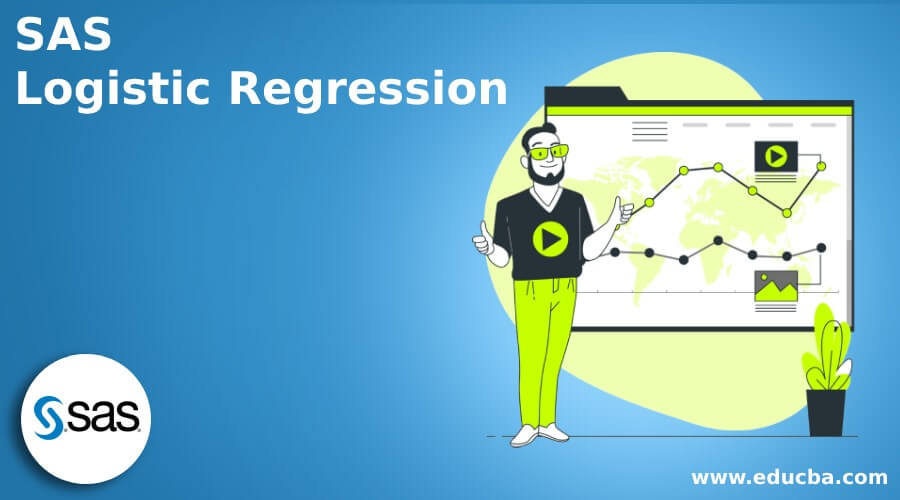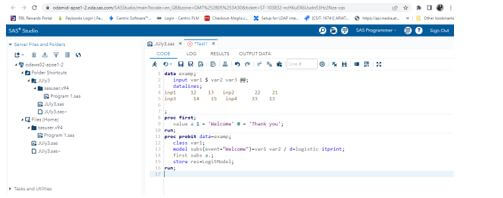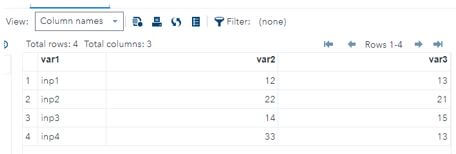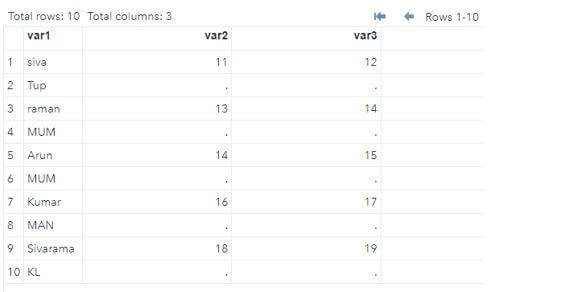Updated March 17, 2023
Introduction to SAS Logistic Regression
The SAS logistic regression is mainly used to predict the result of the categorical dependent variable based upon one or more dependent and independent variables for using multiple regression. The logistic regression is primarily based upon the maximum likelihood(ML) estimation algorithm, in which coefficients maximize the probability for different versions and iterations to choose the values for regression parameters and estimate the data ratio to interpret each other.
What is SAS Logistic Regression?
It is one of the SAS models and is mainly used for data beginners; the logistic model will mostly share the common feature. The general class of the linear models will mean the response variable for assuming the other explanatory variables. It has other means like pi, and implicit data depends on the response behaviour variable to be fixed. This logistic procedure will fit the linear regression models for response data by the maximum method to perform logistic conditions and regression. It also enables the categorization of the procedure and specific categorical variables, also known as the classification of class variables. It is mainly followed continuously with the variable on explanatory procedure effects. It supports other complex models, and data interactions will use the nested data terms with the GLM procedure.
Using SAS Logistic Regression
The SAS categorical dependent and predicted results for varying the variables are based on the logit model, which helps to dichotomous outcome variables. Mainly, the logit model comes to the odds type of outcomes combined with the linear style of predictor variables by using data analysis commands. It also does not cover the aspects of the research process, which is expected to include the data cleaning, checking, and verification for the assumptions, model diagnostics, and potential flow up to the data analyses. This statistical model, most often used in classification and predictive analytics, estimated the probability of the event occurring with the dataset for independent variables.
The logistic regression also supported and used the machine learning algorithm to classify the problem and the predictive method for analyzing the algorithm and probability concept. It is a method that helps to fit the regression response variables, which may be of any type, like binary, string, and other character formats. There are many ways to depend on the data format to get more details, referring to programming languages like SAS, R, Python, etc. If the datas come under the tabular form, it will show the table rows and columns, and the response pattern is counted with several test cases that mapped the data frequency. The variable accepted equals the marginal frequency counts for accepting the SAS models.
Because the grouped datas helps to multiple trails of the data set and event model, which appear on the equal sign, we can use predictors on the other side, which are mainly separated by using the spaces for more than one, and intercept with default values which automatically set the scales.
Steps to create a logistic regression
1. After login the SAS OnDemand for Academics dashboard.
3. Type the below code as an example and run it.
4. data examp;
5. input var1 $ var2 var3 @@;
6. datalines;
7. inp1 12 13 inp2 22 21
8. inp3 14 15 inp4 33 13
9.
10. ;
11. proc first;
12. value a 1 = ‘Welcome’ 0 = ‘Thank you’;
13. run;
14. proc probit data=examp;
15. class var1;
16. model subs(event=”Welcome”)=var1 var2 / d=logistic itprint;
17. first subs a.;
18. store res=LogitModel;
19. run;
The above steps are the basic steps to perform the logit model to predict the results of the categorical dependent of the variable, which is based upon one or more continuous types of multiple regression. Analysis of the dependent variables will be more categorical and promoted based on experience and performance.
SAS Logistic Regression Model
The logistic regression model is the supervised machine learning algorithm for classifying the data, which helps to predict the probability of the categorical dependent variables. It’s a binary set of variables that contains mainly encoded and coded for a large number of datasets which helps to continuous format along with discrete variables and non-linear features. The datasets and other training set datas validate by using the sort and split with the correct data partition for frequency tables. To research the datas by visualizing the class and missing procedure for outliers variables for the data partition.
The following equation is used to calculate the probability of the data matrix:
It’s an equation that calculates the dependent variable for the binomial distribution. For example, magnitude, Sensitivity, Specificity, and Correct KS Statistics calculated the GRE and GPA.
Example of SAS Logistic Regression
Given below is the example of SAS Logistic Regression:
Code:
input var1 $ var2 var3 @@;
datalines;
siva 11 12 Tup MAS CBE
raman 13 14 MUM TBM KAS
Arun 14 15 MUM TBM KAS
Kumar 16 17 MAN TBM KAS
Sivaraman 18 19 KL UP Jammu
;
proc first;
value a 1 = 'Example First' 0 = 'Thank you';
run;
proc probit data=example1;
class var1;
model subs(event="Example First")=var1 var2 / e=logistic itprint;
first subs a.;
store res=LogitModel;
run;Output:
1. In the above example, we used to set and utilize the datas in the logistics model.
2. First, we declared the inputs using variables like inp1, inp2, etc.
3. Then, we can pass the inputs like datasets on the datalines.
4. We used the procedure(proc) keyword to declare the first procedure to execute the set of statements like value and assigned with variable and pass the characters in two sets.
5. Then, declare the class and model and store the results using the probit execution.
Conclusion
The logistics regression model is the SAS basic model for predicting the dependent variable’s definite results based on one or more continuous. It followed with the dependent and independent variables for data regression analysis to calculate the factors for both promoted and non-promoted in data performance ratings.
Recommended Articles
This is a guide to SAS Logistic Regression. Here we discuss the introduction using SAS logistic regression, model, and example. You may also have a look at the following articles to learn more –









